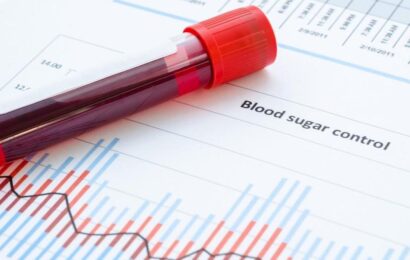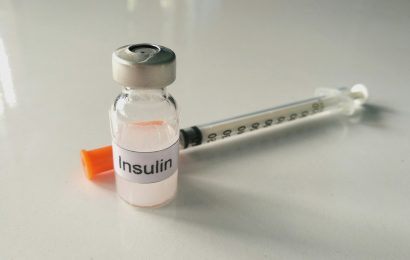If you have diabetes, there’s a good chance that you take medication to help you manage the condition. And while there are many issues and concerns around taking medication, including cost and side effects, the reality is nonadherence or poor adherence — meaning, not taking the medicine as prescribed — is a real concern. In fact, about half of people who have diabetes don’t take their medication as directed. Not taking medication at all or as directed can lead to a host of serious problems, including increased health-care costs, more hospitalizations, and more deaths. Not good all around.
“Take as directed”
According to the Centers for Disease Control and Prevention (CDC), medication isn’t taken as prescribed 50 percent of the time. There are several possible reasons:
• Instructions on when or how to take medicines were never provided
• Forgetfulness
• Lack of a clear understanding of how to take medicine
• Taking multiple medications with different regimens
• Side effects
• Perception that medicine doesn’t seem to be working
These are real concerns that can seriously impact your health if they’re not addressed and resolved.
To get cutting-edge diabetes news, strategies for blood glucose management, nutrition tips, healthy recipes, and more delivered straight to your inbox, sign up for our free newsletters!
It’s all in the timing
If you have trouble affording your medicines, or you aren’t taking them because of side effects, let your doctor know right away. But what if you’re taking your medicines but aren’t really sure WHEN to take them? Or you’re taking them when when it’s convenient for you, rather than as prescribed? Does it even really matter? The answer to that question is yes. Some medicines can be affected by what and when you eat. Having food in your stomach at the time you take your medicine can end up delaying or decreasing the absorption of that medicine. And certain medicines can interact with the type of food you eat. On the other hand, there are certain medicines that are better tolerated by taken them with food — aspirin and other anti-inflammatory drugs are a good example.
Understandably, it can be somewhat confusing figuring out exactly when to take your diabetes medicine. Terms such as “take before a meal” or “take with food” or “take on an empty stomach” are not always clear and are definitely open to interpretation. How soon before a meal? With the first bite of food or halfway through a meal? How are you to know? To help you make sense of vague phrasing, here’s some clarification:
• Take on an empty stomach: Take your medicine 2 hours before you eat or at least 2 hours after you eat.
• Take before a meal: This typically means that you should take your medicine at least an hour before you eat your meal.
• Take with food: This means that you shouldn’t take your medicine on an empty stomach. Your best bet is to take it as you start to eat or even during your meal.
When to take diabetes medicines
There are a lot of different types of diabetes medicines available and you might be taking more than one type. If you’re not sure when to take your medicines, ask your doctor or pharmacist. And while it might be easier or more convenient to take all of your medicines at the same time, it’s important to realize that the action of your medicine (meaning, how it works) may be very dependent upon when you take it. Also, be aware that not taking your medicines at times prescribed can put you at risk for hypoglycemia (low blood sugar) or hyperglycemia (high blood sugar). Here’s a guide for when to take some of the common types of diabetes medicines:
• Metformin: Take right when you start eating a meal to lessen the chance of stomach upset.
• Glipizide: Take 30 minutes before a meal
• Glyburide and glimepiride: Take with a meal
• DPP-4 inhibitors (such as brand names Januvia, Onglyza, and Tradjenta): Can be taken with or without a meal.
• Empagliflozin (Jardiance) and dapagliflozin (Farxiga): Take with or without food
• Canagliflozin (Invokana): Take before the first meal of the day.
• Exenatide (Byetta): take within 60 minutes before meals.
• Lixisenatide (Adlyxin): take within 60 minutes before the first meal of the day
• Dulaglutide (Trulicity), liraglutide (Victoza), and semaglutide (Ozempic): take at any time of the day, with or without food
When should you take insulin?
The answer to this question depends on a few things. Most importantly, though, is the type of insulin that you take. For example, fast- or rapid-acting insulins, such as lispro (Humalog), glulisine (Apidra), and aspart (Novolog, Fiasp), are meant to be taken 10 to 15 minutes before eating. The new fast-acting insulin Fiasp is taken right at the start of a meal or within 20 minutes of starting a meal. Fiasp starts to work a couple of minutes after you inject it.
What about other insulins? Here’s the rundown:
• Regular insulin, which is a short-acting insulin, is generally taken 15 to 30 minutes before your meal.
• NPH, an intermediate-acting insulin, is typically given 30 to 60 minutes before a meal or at bedtime.
• Long-acting insulins, such as glargine (Lantus, Basaglar, Toujeo) and detemir (Levemir), are often taken at bedtime, but also in the morning. Because these insulins are considered to be “peakless” and are types of basal insulin, taking them is not dependent on your meal times. However, it’s usually recommended that you take long-acting insulins at about the same time each day, give or take an hour.
Your doctor or diabetes educator may suggest that you take your insulin differently in some situations. For example, if you have gastroparesis (delayed stomach emptying), you might have better blood glucose results by delaying your injection instead of taking it before you eat.
What do those abbreviations mean?
If you take a close look at your prescription label, you might see some abbreviations that don’t make a whole lot of sense. These might be Latin or English abbreviations that pharmacies use to indicate how and when a specific medicine should be taken. Here are some common abbreviations and what they mean:
• qd: every day
• bid: twice a day
• tid: three times a day
• qid: four times a day
• qhs: each night
• ac: before meals
• pc: after meals
• prn: as needed
• po: by mouth
• pr: rectally
• sl: sublingually
• IM: intramuscularly (by a needle)
• IV: intravenously (by a needle)
• SQ: subcutaneously (by a needle)
Fortunately, many prescription labels have become easier to read and you may never see these Latin abbreviations (although they might come in handy if you ever end up on Jeopardy…)!
Helpful hints
Chances are that your diabetes medicines aren’t the only medicines that you take. For this reason, it can be challenging to keep track of when to take all your meds. “Try and have an established routine for taking your medicines,” advises Patricia DiPietro, RN, CDE, a certified diabetes educator at Good Measures. For example, “link taking your meds to a regular habit that you already have in place, such as brushing your teeth.” It helps to think outside the box to help you remember, too. If you take fast-acting insulin at mealtimes, DiPietro suggests thinking of your mealtime insulin as your fork or spoon — “you can’t eat your meal without it!”
Finally, if you’re still feeling unsure or confused about when to take your medicines (and you’re in good company), don’t hesitate to ask for clarification. Likewise, if you’re struggling to take your medicines at a certain time, don’t be afraid to speak up. There may be other options, such as extended-release or combination forms. Your doctor can help, as can your pharmacist. You’re more likely to take your medicines when you understand how they work, as well as how and when to take them.
Want to learn more about taking diabetes medicines? Read “Making Your Diabetes Pills Work for You,” “When to Take Diabetes Medicines: Diabetes Questions & Answers,” and “What to Know About Metformin.”





